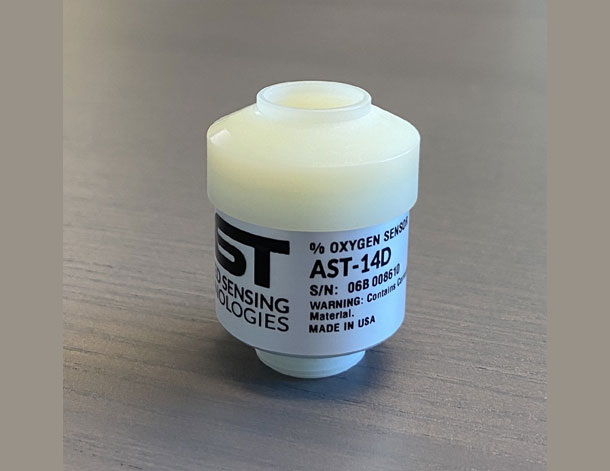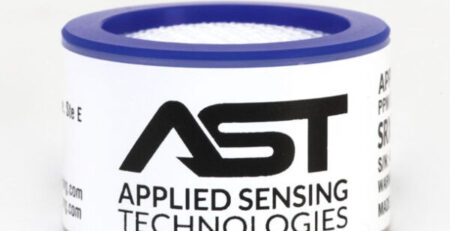Why Electrochemical O2 sensor for Scuba Diving
Electrochemical O2 sensors are the best choice for scuba diving due to their excellent stability at elevated O2 levels, accuracy, relatively small size and lower cost. In electrochemical O2 sensors, oxygen is reduced at the cathode with simultaneous oxidation of the anode (typically lead, Pb). The flow of current between anode and cathode is proportional to the partial pressure of O2 in a gas stream. Sensors are calibrated against a known standard before diving. Theoretically, these sensors should continue to function without losing signal strength but in reality, some sensors tend to drift after a few hours of dive. This is due to “current-limiting” behavior of the sensor. AST found that the geometry of Pb anode, its placement inside the sensor body, and electrolyte composition play a major role in sensor stability during dive. AST uses a unique anode structure. The placement of the anode affords maximum active surface available during oxygen reduction process. This diminishes the sensor’s current-limiting behavior. The sensor continues to function at elevated O2 levels thus assuring diver’s safety.
In certain O2 sensor designs, condensation of moisture contributes to the loss of signal output. This forces the diver to abandon the dive after a few hours of diving. AST diving O2 sensors with unique clamping material and physical mechanism in front of the sensing surface prevents moisture condensation. The sensor continues to hold its signal output through a dive lasting few minute to few hours.
For a free sample of any model of AST Scuba diving O2 sensors, contact us at info@appliedsensing.com



Leave a Reply